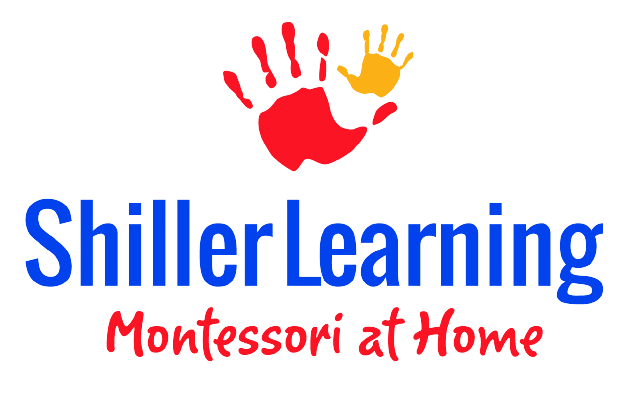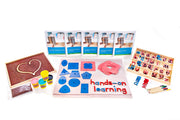Children learn best when all of their senses are engaged. A multisensory approach in education is not simply a catchy trend. It’s a proven approach to enhance learning and cement concepts. Hands-on math education teaches concepts in a way no textbook ever could. By engaging the senses, our children can experience concepts in a more concrete way. This helps subjects that might feel extremely abstract, such as multiplication, become relatable and less intimidating.


Give these hacks a try in your homeschool to see your children thrive with their times' tables!
Multisensory Multiplication Games & Hacks for Your Homeschool
- Building equations with blocks- Children’s play blocks make the best manipulatives! Create a visual example of the equation you are solving with a set of blocks. By building the equation, children benefit from a tactile experience of physically feeling the numbers as well as the visual benefit of seeing the quantity. Children can also build a visual representation of the times table with blocks if they feel ambitious. This is a fantastic way to incorporate hands-on math into your home. [The ShillerLearning math curriculum does this with decimal material (base ten blocks), number cards, the operator set, and later number tiles (along with the lines of The Stamp Game].
- Draw out the equation- For example- Take the equation 4x6. Have the student draw a 4 by 6 grid of stars/circles/flowers/ etc. to visualize the equation and count the total number. You may use the ShillerLearning Graph sheet or Blank Number Grid for this.
- Dots or stickers- This is done similar to drawing as above. Using BINGO daubers or small stickers, children create a visual representation of the equation.
- Multiplication songs- Check out the ShillerLearning CD's for the “Multiples of Four”, “Count by Fives”, and “Powers of Ten” songs to use in your homeschool. Kids love to sing and dance to these songs!
- ShillerLearning’s base ten decimal materials- These are the blue manipulatives in our Math Kit I. Using the materials provides students with a concrete way to make a physical representation of numbers, equations, and value.
- Use art- Children with a creative streak can greatly benefit from incorporating art. Giving them a chance to make a beautiful multiplication table can help immensely. Turning equations into pictures is another approach for incorporating art.
- Tap numbers with fingers on the table- This can be an especially useful way to work on multiplication facts. The student taps one finger for each number. If they are working on counting by 3s, for example, they would tap their finger harder for each multiple of three.
- Jump it out- Similar to above. In this approach, children jump up for each number and do a jumping jack on the multiple.
- Money- Using cash is an excellent way to give kids a hands-on, real-life experience with multiplication. Allow them to figure out how much change is needed at the grocery store, to sort and count change, and other money experiences.
- Use a ball- Say an equation and toss the ball to your student. They can toss the ball back after answering the equation. Roleplay and have the student ask you the equation. Occasionally throw in a wrong answer to see if your student catches it. You can also write numbers on a ball. Toss the ball to one student who makes note of the number on top. The ball is then tossed to the next person who makes note of the number on top. Students then work together to solve the equation of those two numbers multiplied to one another.
- Food can sometimes be the answer to a problem- Use small snacks as manipulatives to eat after the equation has been solved. Students can build out the equation with their favorite treat and eat the answer!
- Completing multiplication tables- Proving a student with a blank multiplication table to fill out can have surprising benefits. Some children may need to fill our a table dozens of times along with incorporating other techniques listed here. You may print additional grids for your multiplication tables from your customer downloads.
- Number tiles- Another hallmark of ShillerLearning’s materials are our number tiles. You will recognize how these are used if you are familiar with the Montessori Stamp Game. Students use these to build equations as they move on from the base ten materials. The number tiles are the final transition in moving from concrete (base ten materials and number cards) to abstract work (just pencil and paper or mental math) in the basic operations. Instead of the unit cubes, we use the “1” tiles; instead of ten rods, we use the “10” tiles; instead of the hundreds of flats, we use “100” tiles; instead of the thousand cubes, we use “1000” tiles.
- Card games- Divide a deck of cards evenly between two players. Each player flips two cards at a time and multiples the amount shown on their cards. The player with the highest equation takes the other players cards. Play continues until someone runs out of cards, or for a set amount of time. Creating multiplication games with materials already on hand is an excellent way to build skills!
- Dominos- These already have two numbers on each piece. Multiply the two numbers together. Play a game similar to the approach above. You can also adapt the regular dominos game so that players can place a piece that has the same answer as one already on the board.
- Cooking- Following a recipe is an excellent way to work on multiplication skills. From measuring ingredients, adapting measurements, adjusting recipe size, and adjusting serving skills. Cooking together is an excellent way to work on math together.
- Flash cards- ShillerLearning’s flashcards are an excellent resource. These cards help children learn facts without just rote memorization. Each card demonstrates how to make the equation out of our base 10 materials as well.
Check out all our math songs on these albums:
Like this? Check out our Math Kits to help teach your children more about money. They help children understand the concept of money, make change, and other practical money skills.






